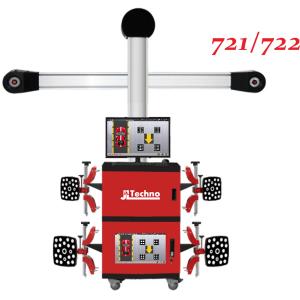
Air conditioning was an invention that made the South a viable place to live and do business. When they figured out how to add it to your car, the trip there and back got a lot better, too. Your A/C system may seem complicated, and it is, but it's also easy to understand, and has some parts that you can service yourself.
Any system that lowers temperature operates in similar fashion. First you take a gas, like Freon, and place it in a sealed system. This freon is then pressurized using a compressor. As it's pressurized, it gets hot by absorbing the heat around it. This hot gas is then circulated through a series of tubes that dissipate the heat. Scientifically, the gas removes heat rather than adds cold, but that's a lesson in physics that doesn't really matter to us right now. The gas can lose lots of its heat, in other words it gets really cold, when you reduce the pressure. As it cools it becomes a liquid. This is when you get cold air blowing on your sweaty forehead. To use this system in a car, it needed very little adaptation from its early applications as a refrigeration device. since it was discovered that Freon (R-12) was harmful to the earth's Ozone layer, it's been phased out for automotive use, and replaced with the slightly less efficient, but harmless R-134a refrigerant. This is actually good news because for years it was against the law to service your own air conditioning system without a license. Now that the refrigerant is safer, we can all work on our own A/C systems again! Some cars have not been converted from the old R12 to R-134a, but this conversion can be done easily.
Your air conditioning system is made up of a compressor, a condenser, an evaporator (or drier), refrigeration lines and a couple of sensors here and there.
Compressor: This is the heart of your a/c system. The compressor is what takes the refrigerant (the gas) and pressurizes it so it will cool the air. It's run by an engine belt. The compressor also has an electrically operated clutch that turns the compressor on and off as you demand more cool air.
Condenser: The condenser is like a miniature radiator, usually mounted at the front of the car right next to your big radiator. Sometimes the condenser will have its own electric cooling fan, too. The hot, compressed air passes through the condenser and gets lots cooler. As it cools, it becomes a liquid.
Evaporator: The evaporator is another little radiator that does just the opposite task as the condenser. As the super-cool liquid is passed through its tubes, air is forced through and gets really cold, right before it hits your face. As it warms up again, the refrigerant starts turning back into a gas.
Thermal Expansion Valve: You don't always want to freeze your toes off, so the a/c system has a valve that controls the flow of super-cool refrigerant to the evaporator. This way you can regulate how cold the air blowing on you gets. There are a few types of valves in use these days, but they all do the same thing.
Drier or Accumulator: The drier, also known as the receiver-drier, is sort of the safety catch for your system. The compressor is only supposed to compress the gas form of your refrigerant. However, there's always a chance that some liquid could make it back that far. The drier catches this liquid before it can damage your compressor. Since even the tiniest leak or careless installation can introduce water moisture to the system, the drier absorbs this chemically, using what's called a dessicant (similar to that packet of "DO NOT EAT" that comes with electronics). The drier also has a filter that catches any gunk that might be in there.

Cost efficient solution of wheel alignment with dual monitor for easiness of operation under the...